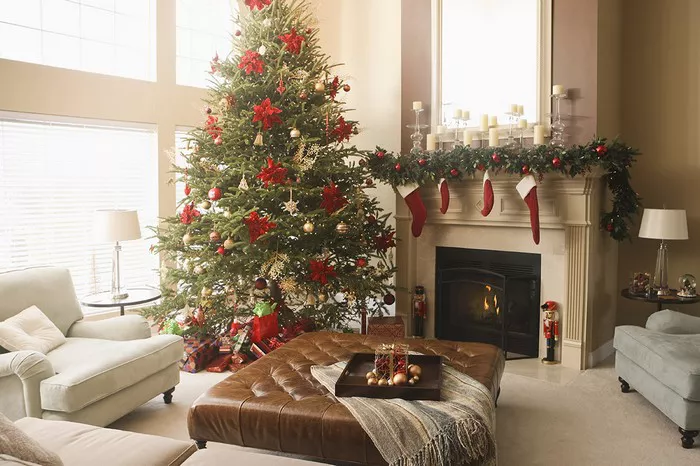During the festive season, few symbols evoke the warmth and joy of Christmas quite like the classic Christmas tree. Towering evergreens adorned with twinkling lights, shimmering ornaments, and a shining star on top are emblematic of the holiday season in many cultures around the world. This cherished tradition has a rich history dating back centuries, intertwining religious, cultural, and even ecological significance. In this article, we delve into the origins, symbolism, and evolution of the classic Christmas tree, exploring why it remains a beloved centerpiece of holiday celebrations worldwide.
Origins and Evolution
The roots of the classic Christmas tree can be traced back to ancient civilizations. Evergreens, such as fir, pine, and spruce trees, have long been revered as symbols of life, vitality, and resilience during the darkest days of winter. Ancient Egyptians, Romans, and Celts celebrated the winter solstice by decorating their homes and temples with evergreen boughs as a reminder of the coming spring and the promise of new life.
The modern tradition of the Christmas tree, however, can be primarily attributed to Germany in the 16th century. According to popular legend, the Protestant reformer Martin Luther was the first to decorate a tree with candles to recreate the awe-inspiring beauty of starlight filtering through the branches of the forest. This act is said to have inspired the tradition of lighting up Christmas trees during the holiday season.
The Christmas tree tradition gained popularity throughout Europe in the 17th and 18th centuries, particularly among the nobility and upper classes. Decorated with fruits, nuts, candles, and handmade ornaments, these trees became elaborate centerpieces of lavish Christmas celebrations. It wasn’t until the 19th century, however, that the Christmas tree tradition truly took root beyond European borders.
The widespread adoption of the classic Christmas tree in North America can be attributed to German immigrants who brought their cherished traditions with them to the New World. In 1848, a depiction of Queen Victoria and Prince Albert standing beside a decorated Christmas tree at Windsor Castle was published in the Illustrated London News, capturing the imagination of people on both sides of the Atlantic. This iconic image helped popularize the Christmas tree tradition in English-speaking countries and beyond.
Symbolism and Significance
The classic Christmas tree is rich in symbolism, reflecting both religious and secular meanings that resonate with people of all backgrounds. At its core, the evergreen tree represents resilience, hope, and everlasting life—a poignant reminder of the enduring spirit of the holiday season.
For Christians, the Christmas tree holds deep religious symbolism. The triangular shape of the tree is often interpreted as a representation of the Holy Trinity—Father, Son, and Holy Spirit. The star or angel placed atop the tree symbolizes the Star of Bethlehem, which guided the Three Wise Men to the birthplace of Jesus. Red and gold decorations are reminiscent of the blood shed by Christ and the gifts presented by the Magi.
In addition to its religious connotations, the Christmas tree also embodies themes of community, generosity, and goodwill. Families and friends come together to decorate the tree, creating cherished memories and strengthening bonds. The act of giving and receiving gifts beneath the tree is a tangible expression of love and generosity—a tradition that dates back to the Magi’s offering of gifts to the infant Jesus.
From a secular perspective, the Christmas tree serves as a symbol of unity and inclusivity during the holiday season. Regardless of religious affiliation, cultural background, or socioeconomic status, the sight of a beautifully decorated tree evokes feelings of joy, wonder, and nostalgia. In multicultural societies, the Christmas tree has become a unifying symbol that transcends religious boundaries, bringing people together in the spirit of peace and harmony.
Environmental Considerations
While the classic Christmas tree is beloved for its beauty and symbolism, it’s important to consider the environmental impact of this cherished tradition. In recent years, there has been growing concern about the sustainability of real Christmas trees, particularly in light of deforestation and carbon emissions associated with their production and disposal.
To mitigate these concerns, many environmentally-conscious consumers are opting for sustainable alternatives to traditional Christmas trees. Artificial trees made from recycled materials offer a reusable and eco-friendly option for those who prefer the convenience and longevity of artificial decorations. Additionally, some individuals are choosing to decorate living trees in pots or containers, allowing them to be planted outdoors after the holiday season.
For those who still prefer the authenticity and aroma of real Christmas trees, there are sustainable options available, such as purchasing trees from certified organic farms or participating in tree recycling programs after the holidays. By making informed choices and adopting eco-friendly practices, we can enjoy the beauty of the classic Christmas tree while minimizing our impact on the environment.
Conclusion
The classic Christmas tree is more than just a decorative centerpiece—it’s a timeless symbol of joy, hope, and unity that transcends cultural and religious boundaries. From its ancient origins as a symbol of life and resilience to its modern incarnation as a cherished holiday tradition, the Christmas tree holds a special place in the hearts of people around the world.
As we gather with loved ones to decorate our trees and exchange gifts beneath their branches, let us pause to reflect on the deeper meanings and traditions that make this season so special. Whether adorned with twinkling lights and handmade ornaments or standing tall and proud in its natural beauty, the classic Christmas tree reminds us of the true spirit of the season—peace, love, and goodwill to all.

























